
Table of Contents
Many tourists who come to Japan for the first time are often surprised to find that this relatively small Asian country, one of the most advanced industrialized countries in the world, also has a rich and fascinating history that can be traced back thousands of years.
Long before many of the most magnificent cathedrals in Europe were built, Japanese Shinto and Buddhist temples were very mature and attracted pilgrims and patrons because of their often elaborate designs and decorations. At the same time, the country has mastered the skills and craftsmanship that will make it prosperous, from fine porcelain and ceramics to textiles such as silk.
Most of the rich traditions have been preserved (or rebuilt) despite wars and natural disasters, and a trip to Japan is an unforgettable adventure. With countless famous attractions, exciting activities, and attractions worth exploring, a vacation in Japan is a massive investment of time and money.
Best Time to Visit Japan
Japan is known for its rich culture, heritage, and technological advancement. It has 23 world heritage sites and is also very suitable for dining and shopping experiences.
Land in Tokyo and experience the juxtaposition of modern buildings (such as Tokyo Tower) with historical temples and museums. Mount Fuji is located in the southwest of Tokyo and is an active volcano considered sacred by the Japanese. You can relax in the natural hot springs in Hakone.
If you are a history lover, you may want to visit the Hiroshima Peace Park Memorial Hall and Shrine in Kyoto. While in Kyoto, you can check out Japanese bullet trains and make time for the traditional tea ceremony. The nearby seaside city of Osaka offers you a taste of modern architecture through the Umeda Skywalk, and you can also enjoy Japanese cuisine and lively nightlife.
If you visit in autumn, go to Lake Kawaguchi and Shirakawa to enjoy the hot springs and autumn colours. Hirosaki Castle is a must-see for the cherry blossom festival that starts in early April. Japan also cherishes entertainment. Going for a ski trip in Sapporo, Tokyo Disneyland is a must if you bring children.
Japan Train Services is one of the best in the world: Faster than a high-speed bullet (train).
Japan has an excellent, modern, and efficient public rail system that is easy to navigate. Japan Railway Company is responsible for more than 21,000 kilometers of railway lines, connecting all locations in major cities such as Tokyo.
The best one is the Shinkansen Limited Express, which can reach a speed of 320 kilometers per hour. It takes about 1170 kilometers from Tokyo to Fukuoka, which can be reached in more than 6 hours. Be sure to obtain your Japan Rail Pass or book a train ticket before departure to ensure savings.
Explore the country’s best tourist attractions through our list of Japan’s top attractions.
Tokyo’s most famous landmark, the Imperial Palace, with its beautiful 17th-century gardens surrounding the city walls and moats, is a must-see when visiting the Japanese capital. Don’t be shocked that most of the palace is not open to the public (still used by the royal family) because as long as you stroll around the site, you can still see enough scenery.
In addition to enjoying the many beautiful views of the palace from many places in the surrounding gardens, visitors can also enter the Dongdong Garden and other areas open to the public as part of an organized tour. One of the most romantic bridges is the famous Erhou Bridge, or “Shuangqiao”, named for its water reflection.

Best Places to Visit in Japan: Imperial Tokyo
One of the must-visit places for tourists visiting Tokyo is the famous Ginza shopping district. This always-bustling area has the Kabukiza for Kabuki performances and the Shimbashi Inbugo Theater for traditional Tobu and Bunraku performances.
The majestic Mount Fuji (Fuji-san) is undoubtedly Japan’s most famous landmark and the highest mountain in the Country. At 3,776 meters high, it is located on flat ground to the south and east, enough to overlook Tokyo, which is more than 100 kilometres away.
Mount Fuji has been acclaimed in art and literature for centuries and is now considered a significant symbol, so much so that UNESCO recognized its global cultural significance in 2013. Mount Fuji is part of the Fuji-Hakone-Izu National Park. Everyone has more than 1 million people climb in summer as a pilgrimage to watch the sunrise from the top of the mountain.

Japan Tourism: Best Places to Visit in Japan: Mount Fuji
Japan Will Start Allowing Visa Holders To Re-Enter In September 2020
Although some people still choose to climb from the base, most climbers now start from the centre mark and at the fifth stop, making the six-hour climb more controllable. It is recommended that those who attempt a complete climb leave in the afternoon, and it is recommended to interrupt the climb and stay overnight in one of the specially built “mountain huts”. Getting up early the next day will take you to the top of the mountain to watch the sunrise.
Of course, for many people, just looking at the mountains from a distance or sitting on a comfortable express train is enough.
As one of Japan’s most visited cities and one of the few cities in Japan that survived World War II, Kyoto attracts more than 10 million tourists yearly. Most people come to explore the gorgeous old streets and buildings, most of which have not changed since the imperial family lived here more than 1,000 years ago.
Before this, the city was the most important cultural centre of Japan. This legacy continues to this day. Several museums and art galleries are filled with essential sculptures, paintings, and other art forms.
Highlights of the buildings influenced by Buddhism in Kyoto include many well-preserved temples, 30 still in use, and important buildings such as the 14th-century Golden Pavilion (Golden Pavilion), known for its exquisite gold leaf exterior.
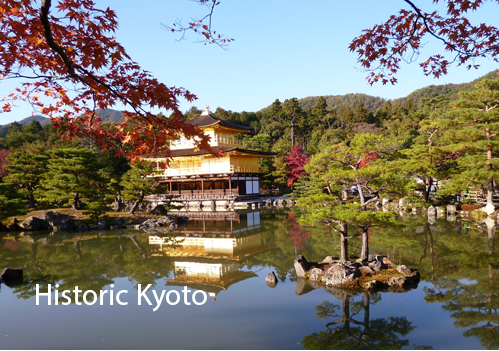
Best Places to Visit in Japan: Kyoto
Visit Nijo Castle, a 17th-century fortress that retains the original walls, towers, and moat. The castle’s beautiful gates and impressive mansion are also worth seeing.
Another landmark worth visiting is the original Kyoto Gocho, which was built in 794 AD and is one of the city’s most visited historical sites.
Finally, your trip to Kyoto is incomplete if you don’t spend time exploring the Arashiyama bamboo forest. This beautiful Gaozhu district is only a few minutes from the city center.
Although there is nothing to say about the horror of the atomic bombing of Hiroshima in August 1945, it can be said about the incredible efforts made by this vibrant city to commemorate the many victims of the world’s first nuclear attack of more. Perhaps most importantly, Hiroshima has become a symbol of lasting peace.
More than 1 million people annually, many from abroad, visit Hiroshima Peace Memorial Park (Hiroshima Heiwa Kinen Kōen), which is located at the centre of the atomic bombing. The area was once a busy area of the city. Here, you will find many significant monuments, memorials, and museums related to the events of that day.
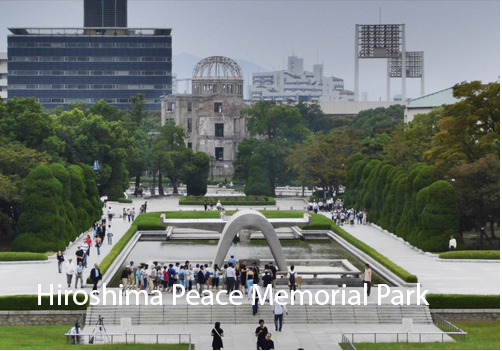
Best Places to Visit in Japan: Hiroshima National Park
In addition to the gardens and colourful cherry blossoms, the Peace Memorial Hall in the park has many exhibits showing the cause of world peace. Here, you can also find the monument, the fire of peace, and the atomic bomb dome, which are the ruins of the office building at the center of the explosion.
Osaka Castle (Ōsaka-jō) was built in 1586 by the famous Japanese samurai and statesman Toyotomi Hideyoshi and was the largest and most important castle in Japan. Although it has been destroyed and rebuilt many times, the current building was built in 1931 and remains intact.
Highlights of the visit include the massive five-story, 42-meter central tower. Built on a 14-meter-high stone base, the tower contains many exhibits detailing the history of the castle and the city. Be sure to visit the top floor to enjoy the beautiful scenery of Osaka, especially at sunset.
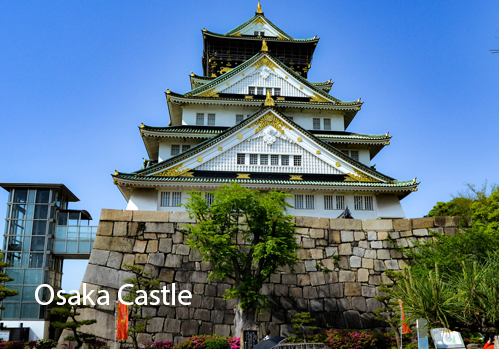
Japan Tourism: Best Places to Visit in Japan: Osaka Castle
French shrines are also important places in the gardens of Osaka Castle, and Shitennoji, the most famous temple in Osaka, is also worth a visit. Its history dates back to 59 AD. This beautiful shrine has the first Buddhist temple in Japan, with a five-story pagoda. And some other beautifully decorated buildings.
These include the Kondo and its beautiful statues and paintings. Lecture Hall (Kodi); is a lovely covered walkway connecting the venue’s three gates.
Miyajima is a short ferry ride from the mainland of Hiroshima, known as the Japanese Shrine Island. Miyajima is located in Hiroshima Bay and covers an area of 30 square kilometers. The most famous is the location of Itsukushima Shrine, a shrine dedicated to the daughter of the wind god Princess Susanoo.
Most of the shrine’s buildings date back to the 8th century. They rise from the waters of a small bay supported only by mounds. At high tide, the effect is simply stunning, making these structures, including the O-Torii, appear to float on the water.
Sidewalks and bridges connect it, and it is a great place to explore, especially its lobby. These include the magnificent Main Hall, Performance Hall (Heiden), Prayer Hall (Haiden), and Senjokaku Hall.
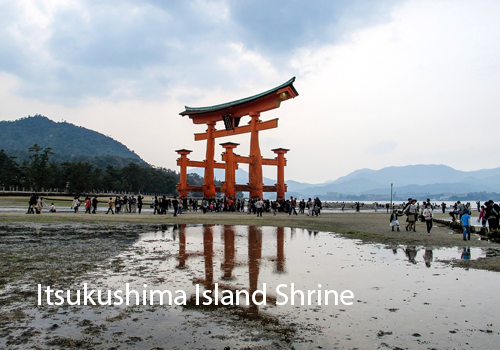
Best Places to Visit in Japan: Itsukushima Island Shrine
Another noteworthy feature is the shrine’s theatre, where visitors can enjoy traditional dance and music performances. The island’s wonderful land and gardens, home to wild deer and numerous birds, are also worth exploring.
Located in the centre of Nagoya, Atsuta Shrine is the most important shrine in Japan, attracting more than 5 million visitors every year. This religious site was built in the first century AD and is famous for its well-preserved royal coat of arms, “Kusanagi-no-tsurugi”, only three in the country.

Best Places to Visit in Japan: Nagoya Atsuta Shrine
Also read: World’s Powerful Passport and why?
Also of interest is the main shrine surrounded by enclosed walls and a treasure trove of many artworks, including ancient and modern paintings, ceramics, jewelry, and traditional masks. In Nagoya, you must visit Nagoya Castle. This magnificent moat complex was built in 1612 and included a 48-meter-high central tower known for its gilded dolphin. It is also a popular place, and its museum houses the art treasures of the former palace and offers magnificent views of the city and the Nubian plain.
Fukuoka-jō (Fukuoka-jō) is one of the few surviving examples of the once prolific and majestic hilltop houses favored by shoguns and city rulers in Fukuoka-jō is one of the highlights of a trip to Fukuoka. This beautiful castle was once part of a vast complex covering an area of approximately 47,000 square meters. Its size and location are still impressive, and it is on a high foundation overlooking the Naka River.
Fukuoka is also famous for its numerous events and festivals. The most famous of these is Hakata Gion Yamakasa, a prominent 700-year-old celebration held every July. It attracts millions of tourists from all over the country to participate in colorful parades, competitions, and traditional activities.
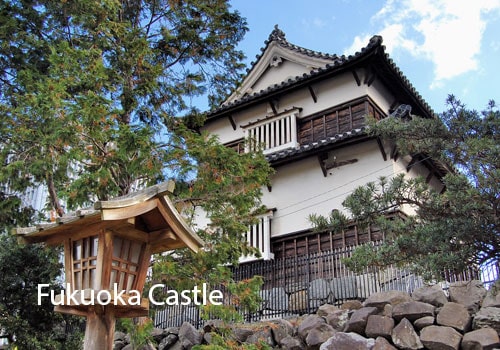
Best Places to Visit in Japan: Fukuoka Castle and Old Castle Festival
This city is not without modern attractions. The most striking is Canal City Hakata, a city in a town with canals running through the entire complex, which includes department stores, hotels, restaurants, and theatres.
For centuries, Nara has been the center of Japanese culture. The beautiful and pristine city has many historical buildings, national treasures, and artworks.
In addition to many historic streets, the city has many important ancient temples. These impressive buildings include the 7th-century Kofukuji Temple, probably the most famous of the seven temples in Nara. The magnificent 8th-century Todaiji Temple (Todaiji), famous for its huge bronze statue of the Great Buddha (Great Buddha), was cast here in 749 AD.
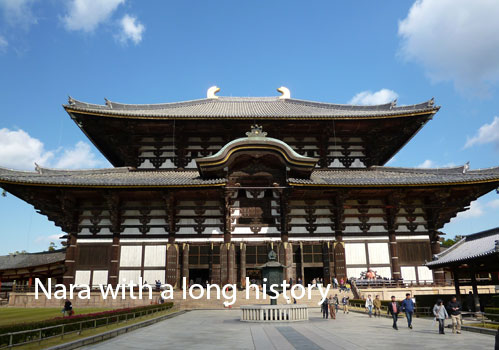
Best Places to Visit in Japan: Temple City
Another attraction of Todaiji Temple is Nandaimon. This impressive two-story building sits on 18 pillars, and two eight-meter-high statues of Nio guard the temple’s entrance. Also worth noting is the Great Buddha Hall, the largest wooden structure in the world.
Japan has many areas of outstanding natural beauty, many of which have been designated as national parks or, in some cases, listed as World Heritage Sites by UNESCO. One of the most fascinating of these countries is the Central Sanyue National Park in the central part of Honshu.
In the northern and central areas of the park, there are a series of mountain ranges, collectively referred to as the Hida Mountains or the Japanese Alps.
The area has some of the highest peaks in the country, including Sui Peak at 3,190 meters and Yali Peak at 3,180 meters. Similar to the Central European Alps in many, whether in natural landscapes or rich in snow in the winter. The Japanese Alps attract many hikers and climbers in summer and skiers in winter.
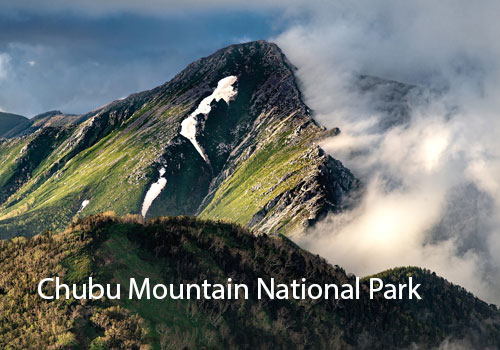
Best Places to Visit in Japan: Cuba National Park
Of particular interest is the park’s rich flora and fauna, including the rare ptarmigan and mountain antelope found at high altitudes. Many hot springs in the park also attracted tourists, leading to the development of many hot springs and resorts, the most famous of which is Catchy.
Sapporo is located on Hokkaido’s northernmost island and offers many tourist activities. As the largest city on the island, it is the center of cultural activities and hosts many fantastic events and festivals. It also has a unique cooking style, a rich history of drama, and many museums, galleries, and parks.
The focal point here is the lovely downtown area, centered on Odori Park, a large green area worth exploring. Within a short walk, you can reach the Sapporo TV Tower and the city’s famous aerial tramway.
The Moiwa Ropeway will eventually take you to the highest point of the mountain, where you can enjoy the beautiful view of the city, which is especially enjoyable at night.
Also read: Record breaks travel from China to Japan
This mountain is also home to the Moiwa Mountain Ski Resort, a popular winter destination, especially since the city’s 1972 Winter Olympics were held. If you arrive in winter, visit the Sapporo Snow Festival in February every year, attracting more than 2 million tourists.
Hence, you should make the most of your crafts by visiting Japan. With so many unique attractions, Japan’s top attractions can be very crowded during the peak summer season. If you can plan your trip flexibly, you can make a sightseeing itinerary that allows you to explore this beautiful country in a quiet season.
Not only will you get fewer group rewards, but you can also enjoy things that other tourists will miss: spring cherry blossoms in places like Nara Park; the incredible fall colours of Jozankei Hot Spring Spa on the hillside; and white snow at Fukuoka Castle and other historical buildings.
So tell us when you are planning to go to Japan in 2022 in the comment section below:
Since 2017, Saba Ghani has been serving as the talented and dedicated chief content writer for Pakistan Tour and Travel & EMHI Solutions. With her exceptional writing skills and in-depth knowledge of the travel industry, she has been instrumental in crafting engaging and informative content that captivates the audience. You can catch her at [email protected] or Twitter
Reliable Pakistan Tour Packages from Islamabad & Karachi